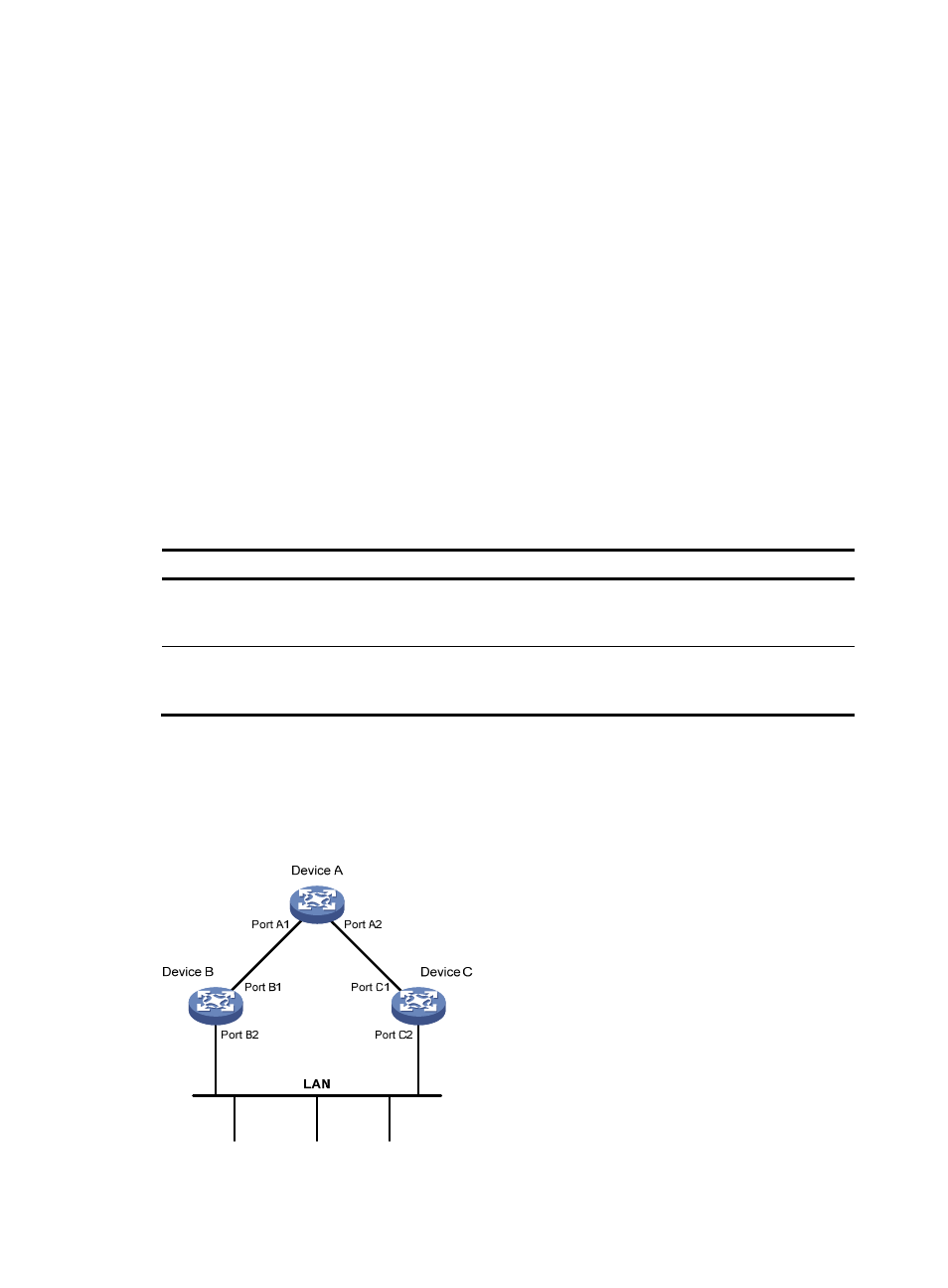Basic concepts in stp, Root bridge, Root port – H3C Technologies H3C WX3000E Series Wireless Switches User Manual
Page 60: Designated bridge and designated port

50
•
Hello time—The transmission interval of the configuration BPDU.
•
Forward delay—The delay before a port transitions to the forwarding state.
Basic concepts in STP
Root bridge
A tree network must have a root bridge.
There is only one root bridge in the entire network. The root bridge is not fixed, but can change along
with changes of the network topology.
Upon initialization of a network, each device generates and sends out configuration BPDUs periodically
with itself as the root bridge. After network convergence, only the root bridge generates and sends out
configuration BPDUs at a certain interval, and the other devices forward the BPDUs.
Root port
On a non-root bridge, the port nearest to the root bridge is the root port. The root port communicates with
the root bridge. Each non-root bridge has only one root port. The root bridge has no root port.
Designated bridge and designated port
Table 8 Description of designated bridges and designated ports
Classification
Designated bridge
Designated port
For a device
A device directly connected with the local
device and responsible for forwarding BPDUs
to the local device
The port through which the designated
bridge forwards BPDUs to this device
For a LAN
The device responsible for forwarding BPDUs
to this LAN segment
The port through which the designated
bridge forwards BPDUs to this LAN
segment
As shown in
, Device B and Device C are directly connected to a LAN. If Device A forwards
BPDUs to Device B through port A1, the designated bridge for Device B is Device A, and the designated
port of Device B is port A1 on Device A. If Device B forwards BPDUs to the LAN, the designated bridge
for the LAN is Device B, and the designated port for the LAN is port B2 on Device B.
Figure 13 A schematic diagram of designated bridges and designated ports
- H3C WX5500E Series Access Controllers H3C WX3500E Series Access Controllers H3C WX2500E Series Access Controllers H3C WX6000 Series Access Controllers H3C WX5000 Series Access Controllers H3C LSWM1WCM10 Access Controller Module H3C LSUM3WCMD0 Access Controller Module H3C LSUM1WCME0 Access Controller Module H3C LSWM1WCM20 Access Controller Module H3C LSQM1WCMB0 Access Controller Module H3C LSRM1WCM2A1 Access Controller Module H3C LSBM1WCM2A0 Access Controller Module H3C WA3600 Series Access Points H3C WA2600 Series WLAN Access Points
